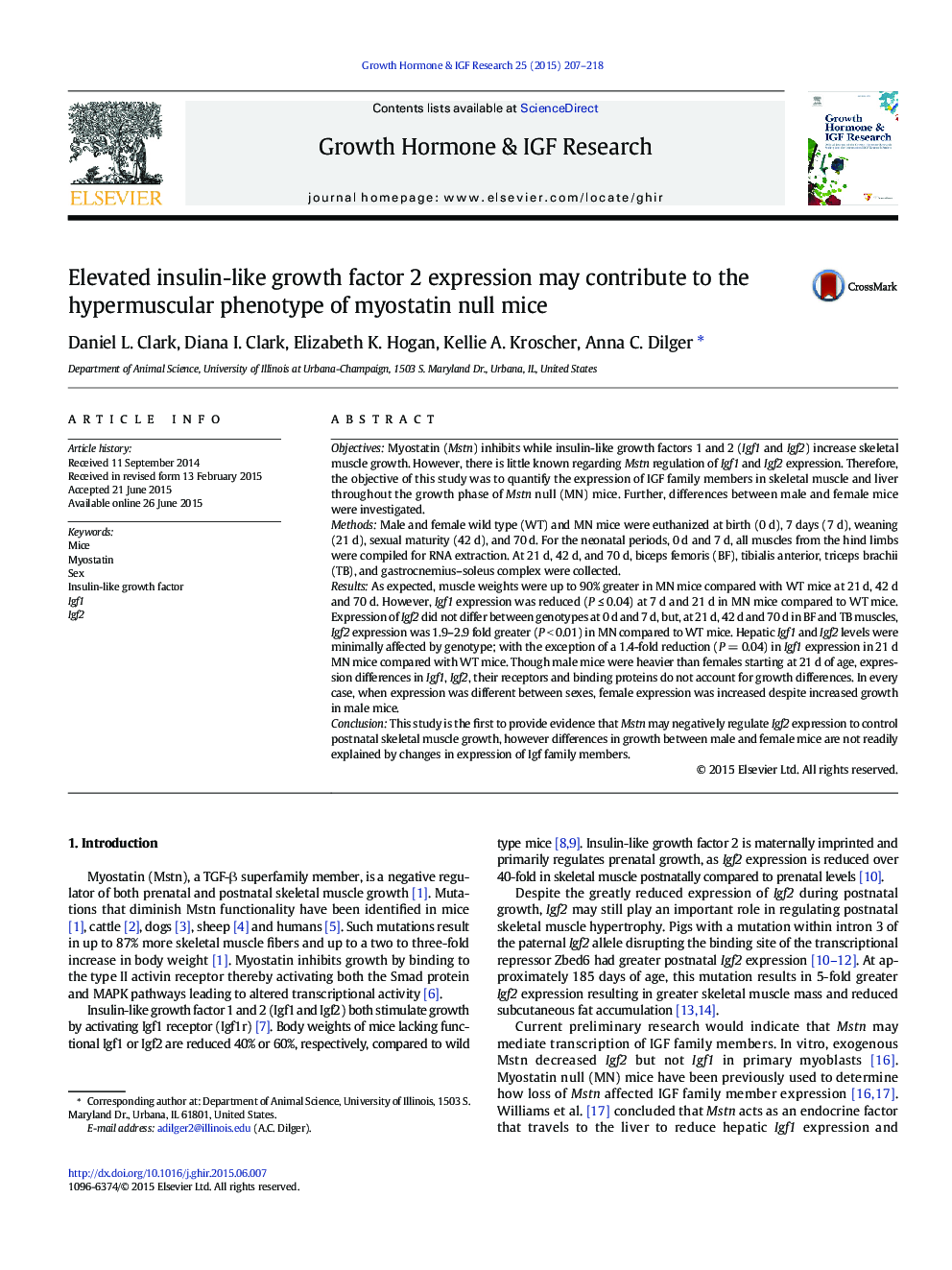| Article ID | Journal | Published Year | Pages | File Type |
|---|---|---|---|---|
| 2802535 | Growth Hormone & IGF Research | 2015 | 12 Pages |
•Myostatin null (MN) mice had heavier muscles than wild-type mice.•MN mice had greater skeletal muscle Igf2 expression compared with wild-type mice.•Skeletal muscle Igf1 expression was not different between MN and wild-type mice.•Hepatic Igf1 levels were reduced; Igf2 levels were increased in MN mice.•Therefore, myostatin may repress growth by inhibiting IGF2 expression.
ObjectivesMyostatin (Mstn) inhibits while insulin-like growth factors 1 and 2 (Igf1 and Igf2) increase skeletal muscle growth. However, there is little known regarding Mstn regulation of Igf1 and Igf2 expression. Therefore, the objective of this study was to quantify the expression of IGF family members in skeletal muscle and liver throughout the growth phase of Mstn null (MN) mice. Further, differences between male and female mice were investigated.MethodsMale and female wild type (WT) and MN mice were euthanized at birth (0 d), 7 days (7 d), weaning (21 d), sexual maturity (42 d), and 70 d. For the neonatal periods, 0 d and 7 d, all muscles from the hind limbs were compiled for RNA extraction. At 21 d, 42 d, and 70 d, biceps femoris (BF), tibialis anterior, triceps brachii (TB), and gastrocnemius–soleus complex were collected.ResultsAs expected, muscle weights were up to 90% greater in MN mice compared with WT mice at 21 d, 42 d and 70 d. However, Igf1 expression was reduced (P ≤ 0.04) at 7 d and 21 d in MN mice compared to WT mice. Expression of Igf2 did not differ between genotypes at 0 d and 7 d, but, at 21 d, 42 d and 70 d in BF and TB muscles, Igf2 expression was 1.9–2.9 fold greater (P < 0.01) in MN compared to WT mice. Hepatic Igf1 and Igf2 levels were minimally affected by genotype; with the exception of a 1.4-fold reduction (P = 0.04) in Igf1 expression in 21 d MN mice compared with WT mice. Though male mice were heavier than females starting at 21 d of age, expression differences in Igf1, Igf2, their receptors and binding proteins do not account for growth differences. In every case, when expression was different between sexes, female expression was increased despite increased growth in male mice.ConclusionThis study is the first to provide evidence that Mstn may negatively regulate Igf2 expression to control postnatal skeletal muscle growth, however differences in growth between male and female mice are not readily explained by changes in expression of Igf family members.
